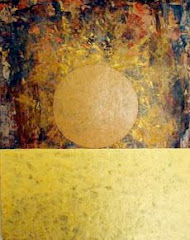Wednesday, June 16, 2010
The Nature Of Mud
Doing a simple "snake test" should be enough to determine if you're actually working with clay because that's what you need to build an earth oven. But that's just the beginning. You then need to mix sand with clay. Generally the proportion is two or three parts sand to one part clay. There are some who have built ovens using clay exclusively, but it hasn't worked for me. I have found that if you use too much clay, then your oven might develop some pretty severe cracks. If you use too much sand, then your oven could fall apart (had it happen).
What you want is for your clay/sand mixture to fuse together and then it is applied around and over your sand form in a consistency that's neither too wet nor too dry. If it's too wet, let you'll get lots of unacceptable slumping. If it's too dry, then it won't hold together.
You can look at all the videos, read all the books, search the internet, but nothing will work better then to have some help from someone who has had some experience building earth ovens.
Monday, June 14, 2010
Earth Oven Insulation
Both hold their shape when dry
Only the perlite with cement holds its shape when wet
An important thing to consider is moisture. Perlite bound with cement holds together when wet, but perlite bound with clay slip does not.
Subscribe to:
Comments (Atom)





